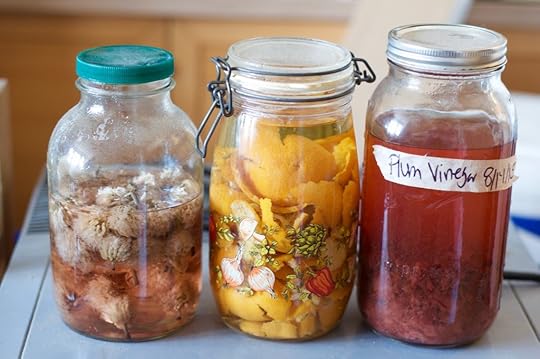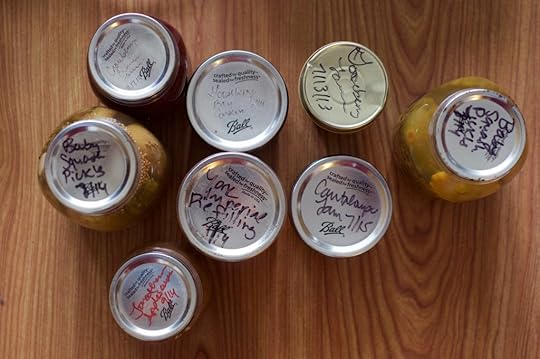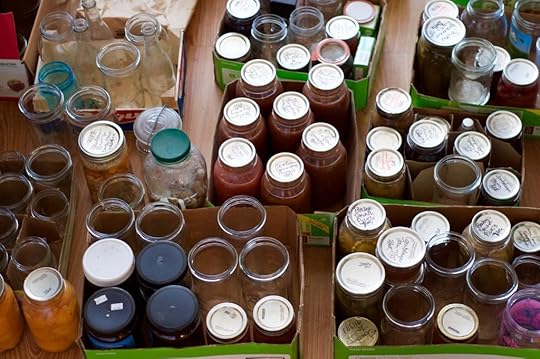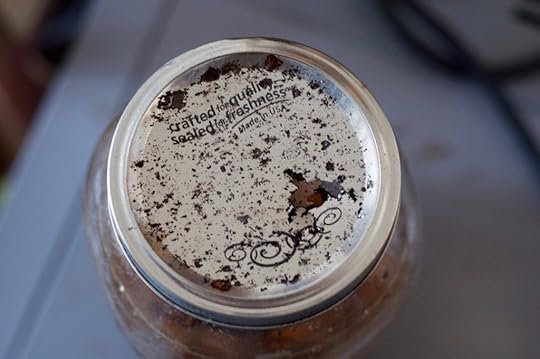Marisa McClellan's Blog, page 45
April 2, 2017
Links: Taco Sauce, Corn Salsa, and Winners

While I am more than a little itchy for the true warmth of spring, I love the feeling of these days being balanced in between seasons. The air is cool, but the light draws more generous with every passing day. It feels hopeful and new and I am grateful for it. Now, some links.
Homemade taco sauce
Quick pickled broccoli
Strawberry shrub
Puffed grain granola
Homemade saltines
Stuffed and preserved eggplant
Freezer corn salsa
Pickle juice veggies
Duck prosciutto
The difference between pressure canners and steam canners
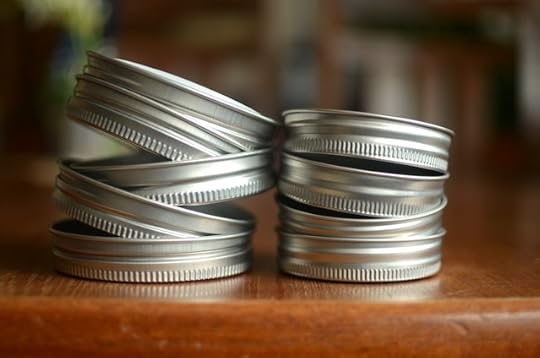
Winners of the Mason Jar Lifestyle giveaway are below in the widget!
Related Posts:
Links: Linzer Cookies, Dorie’s Jammers, and Winners
Links: Pickled Figs, Cinnamon Simple Syrup, and Winners
Links: Wild Jams, Homemade Crackers, and a Winner
April 1, 2017
Quick Pickles for the April Mastery Challenge
Get your Mastery Challenge on with a batch of quick pickles!
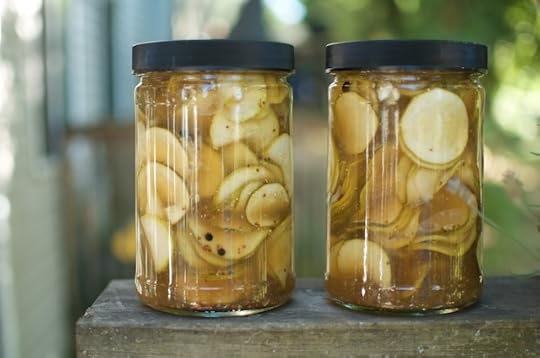
Happy April, friends! This month, the Food in Jars Mastery Challenge is focusing on quick pickles. Also often known as refrigerator pickles, these pickles are typically made in small batches, involve a vinegar brine, need little time to age (often, they’re good to go in just a few hours), and spend the entirety of their lifetime in the fridge.
As in previous months, remember that the goal of this challenge is to help you expand your skills while creating something that you’ll actually use. So choose a project or recipe that will satisfy both your own learning and help you make something delicious.
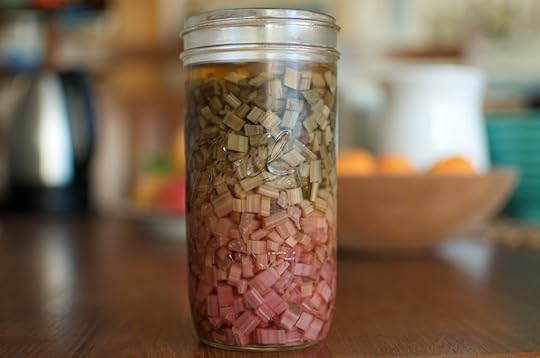
Why a Quick Pickle?
While I like a preserved pickle as much as the next canner, there are a number of reasons why I often turn to small batches of quick pickles when I have produce that needs to be used up or kept from the compost pile.
They’re easy to make and you can make a batch as big or small as you want (years ago, I shared a small batch I’d made simply to keep a single English cucumber from going bad).
You can also be creative when you’re making a quick pickle. Because it’s not a going into a boiling water bath canner, you aren’t wedded to ratios of vinegar and water to ensure safety. You can reduce vinegar amounts and use lower acid vinegars like those made with rice wine (which are typically 4.2% vinegars rather than the 5% pickle-ready versions).
Quick pickles also have a firmer texture. If you’re someone for whom a pickle is judged on its snappy crunch, quick pickles are the way to go. Because they’re not exposed to the prolonged heat of a boiling water bath, they don’t soften nearly as much as a preserved pickle does.
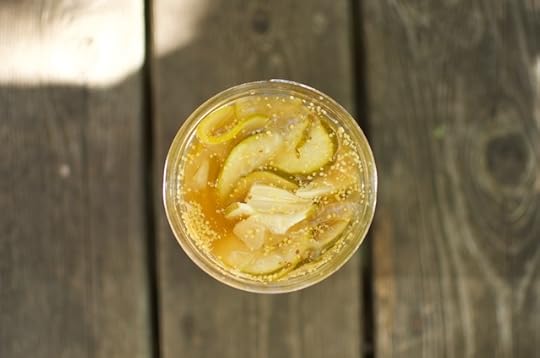
What Should I Pickle Quickly?
The great thing about this style of pickling is that nearly every variety of fruit and vegetable is fair game. I often use this technique when I want pickled onions to heap on a burger, some tangy fruit to add to a grain salad, or a pickles to take to a potluck or cookout.
If you’re a fairly traditional pickle eater, consider starting with a basic batch of Garlic Dill Pickles. Snappy and bright, they’re one of my very favorite pickles. Another good option are thinly sliced carrots and radishes. I also turn to quick pickling when I want to use up odds and ends that might otherwise get trashed. The quick pickled chard stems at the end of this post are a good example of that kind of pickling. And while we’re not yet into the depths of zucchini season, keep this one tucked into the back of your mind when you’re swimming in zucchini.
On the fruity end of things, consider these pickled peaches. As written, it’s not a quick pickle recipe, but a quick version of those same peaches would have been sturdier and more textured. These pickled blueberries are much the same as the peaches.
And, a final one perfect for the Easter and Passover holidays coming soon. Pickled Red Beet Eggs!
And here are some suggestions from around the internet.
Quick Pickled Strawberries || Quick Pickled Red Onions || Quick Pickled Asparagus || Quick Pickled Carrot Spears || Quick Daikon and Carrot Pickle || Spicy Refrigerator Pickled Peppers || Quick Pickled Fennel with Orange || Quick Pickled Apple
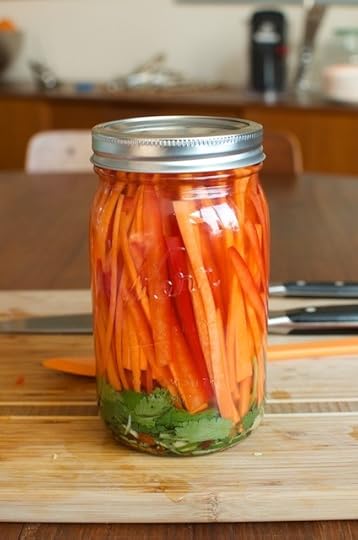
To Blanch or Not to Blanch?
One of the nice things about making quick pickles is that they don’t require a lot of preparation. However, denser things like asparagus, carrots, green beans, and beets absorb pickle brine better after they’ve had 30-60 seconds in a pot of boiling water. It’s not absolutely required, but cuts down the amount of time they’ll need in order to take on the flavors you carefully tucked into your brine.
If you hate the idea of adding a blanching step, you can either skip it or slice and dice the vegetables into increasingly small bits. Just know that the finished pickles will need a few days longer in the fridge and that they’ll always retain an element of their raw texture.
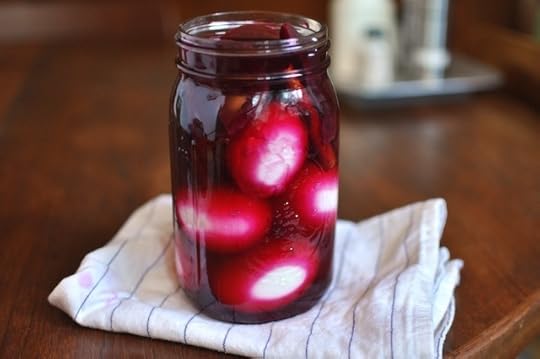
Vinegars and Flavor Elements
Like I mentioned above, one of the best things about making quick pickles is that there’s so much space to be creative. You can use the wacky vinegars you picked up on vacation, or fill half the jar with fresh herbs to add flavor. My only word of advise is that less is often more when it comes to pickling. Don’t heap your entire herb garden into a single batch, hoping for greatness. Creative restraint is your friend.
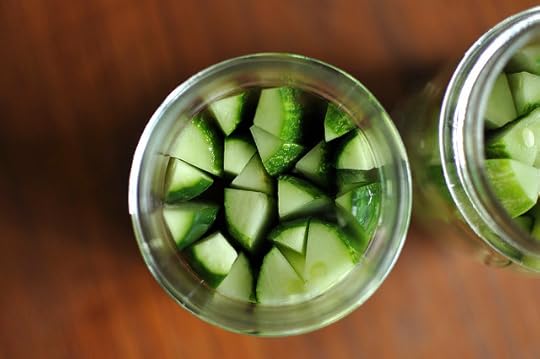
How Long Can I Keep My Quick Pickles?
Provided that you took care to start with squeaky clean containers* and you have the available refrigerator space, quick pickles can last for months in the fridge. I once had a jar of quick pickled cucumbers that I kept for nearly a year and they were amazing when we finally unearthed the jar from the far reaches of the fridge.
However, if you’re opening and closing the jar on a regularly basis, they are best when eaten within four to six weeks of being made. After that they often soften and or develop mold. As always, the rule of thumb is that if you have any doubt about the safety of your pickles, throw them out.
*A great thing about quick pickling is that you can skip the traditional mason jars. Any vessel with a tightly fitting lid will do the job here (like the reused peanut butter jars pictured at the top of this post).
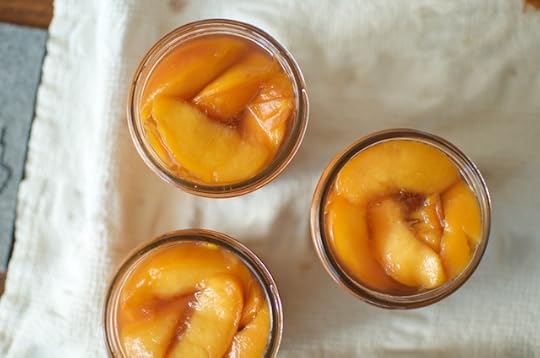
How Do I Use a Quick Pickle?
Quick pickles are great on sandwiches. They work beautifully chopped and tossed with a grain salad. I’m a big fan of adding them to potato salad. They brighten all manner of tuna salads and salmon cakes. Turn them into tartar sauce or Russian dressing.
What are you planning on making for this month’s quick pickle challenge?
Related Posts:
Raspberry Meyer Lemon Shrub
How to Submit Your Salt Preserve for the February #fijchallenge
Lemon Lime Marmalade
March 31, 2017
Mastery Challenge March Round-Up: Jellies and Shrubs
A post shared by Danita (@behndblueeyes) on Mar 26, 2017 at 2:31pm PDT
That’s it! March is all wrapped up and so is our jellies and shrubs challenge. This month, 262 people submitted their projects and lots more joined the conversation in the Facebook group and on Instagram. As always, it was a joy for me to see so many people trying new recipes and finding ways to make and create.

Much like last month, there was a lot to choose from within the challenge parameters. I was surprised and delighted that so many people took on shrubs. As you’ll see in the satisfaction numbers further down, I feel like this month turned a lot of shrub-skeptics into shrub lovers (though not all of you loved the shrubs. And that’s okay too!).
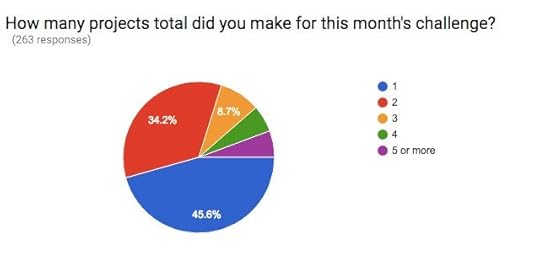
Another thing that was fun to see what that a lot of you made more than one project for the challenge. There’s never a requirement to try the skill more than once, but the more you play around with a particular preserving style, the more you can come to understand it and make it part of your culinary dialect.
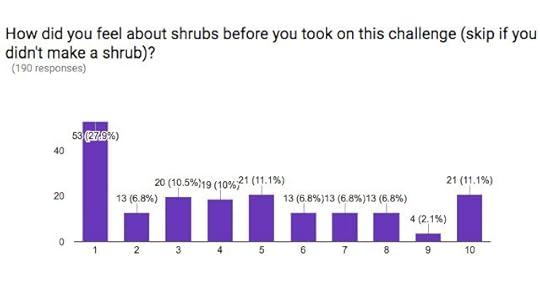
Now, here are the numbers that I thought were most interesting. At the start of this month, a number of you had uneasy or negative feelings about shrubs. And I get it. Sometimes the idea of making a sweetened, vinegar based syrup seems a little weird even to me (and I’ve been doing it for years now).
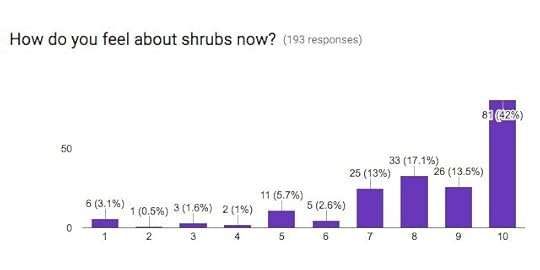
But at the end of the month, a vast majority of those of you who made the shrubs now have an exceedingly positive attitude towards them. Heidi in Rockville, MD said in her comment, “I can’t stop making shrubs!!!! Fun, easy, and sooooo delicious with some soda water or seltzer. They are amazing!” So glad you’re so enthused, Heidi!
A post shared by John Reed (@britinthesouth) on Mar 28, 2017 at 11:29am PDT
The Jellies
Mandarin Dream Jelly – The Artistry of Acorn Cottage
Pomegranate Jelly – BLDRNRPDX
Apple Jelly – Cookin Mum’s Culinary Adventures
Jalapeno Confetti Jelly – Thoughts and Reflections
Mint Jelly – Merry Meeting Menus
Blood Orange Mimosa Jelly – Susan Can Cook
Lavender and Lime Jelly – Tandy Sinclair
Blackberry Cherry Jelly – The Scholarly Redneck
Red Poblano Pepper Jelly – Brit in the South
Satsuma Mandarin Orange Pepper Jelly – Cooking with Mary and Friends
Pomegranate Jelly with Balsamic Vinegar – East of Eden Cooking
Hot and Sweet Jalapeno Pepper Jelly – Gin’s Kitchen
Lavender and White Wine Jelly – My Savory Spoon
Pomegranate Jelly – Canarella
Sour Cherry Jelly and more – Casula Mellita
Pomegranate Jelly & Tart Cherry Jelly – Knittygirl2
Rosemary Grapefruit Jelly – danyelletyrrell
Sour Cherry Elderflower Jelly – alexamartindale
Mimosa Jelly – aligator3
Orange Cardamom Jelly – muffinlady01
Basil Jelly – joelepalmer
Blueberry Lemon Jelly – msroest
Rosemary Rhubarb & Rhubarb St. Germain Jelly – qconway
Razzleberry Jelly – subculturalfarmgirl
Cherry Jelly – Southern with a Twist
Pomegranate Jelly – Small Batch Preserves Made with Aloha
Sweet Peach Wine Jelly – Purlewe An
Mimosa Jelly – Dona Gomez
Oatmeal Stout Jelly – Cathy Samko
Rhubarb Prosecco Jelly – katie.fleischmann
Meyer Lemon Honey Jelly – lauriehkane
Lemony Gingery Gooseberry Jelly – raisinporpoise
Four Pepper Jelly – gdlee9270
Tangelo Mimosa Jelly – wildernessnomad
Concord Grape Jelly – 215kate
Pomegranate & Mint Jellies – Laura Shellaburger
Ginger Vanilla Apple Scrap Jelly – Prospect the Pantry
Apple Jelly – Boudreaux Hund
Black Cherry Jelly – Deborah Lee
Lavender Honey Jelly – Erin Woycik
Rhubarb Prosecco Jelly – Shades of Bliss
Apple Kiwi Kirsch Jelly – Seed to Pantry
Habanero Jelly – m_a_inman
Salted Cantaloupe Jelly – breezycukale
Tart Red Cherry Jelly – behindblueeyes
Mint Jelly – graves_will
Tart Cherry Jelly – roguewrld
A post shared by Cathy Kempf (@cskempf) on Mar 29, 2017 at 1:36pm PDT
The Shrubs
Ginger Blueberry Shrub – BLDRNRPDX
Peach Ginger Vanilla Shrub – Fillmore Container
Raspberry Shrub – Knit at Nite
Lemon Ginger Shrub – Feast in Thyme
Blueberry Ginger Shrub – My Bit of Earth
Strawberry Shrub & Honey Ginger Blackberry Shrub – Gone Walkabout 2
Blueberry Ginger Shrub – The Edible Coast
Pineapple and Red Pepper Shrub – First Things First
Blood Orange Shrub & Blueberry Ginger Shrub – Merry Meeting Menus
Strawberry Balsamic Shrub – Tesla Anomaly
Berry Shrub – Bread Experience
Apple Shrub – Les Campagnonades
Kiwi Lemon Balm Shrub – Love & Wild Honey
Strawberry Rhubarb Basil Shrub – Putting Up With Erin
Blueberry Shrub – Sidewalk Shoes
Strawberry Vanilla Peppercorn Shrub & Pomegranate Shrub – A Plateful of Happiness
Strawberry Shrub & Papaya Shrub – Bubble Tea for Dinner
Blueberry Lavender Shrub – Canarella
Blueberry Apple Ginger Shrub – C’est La Vie
Lemon Ginger Shrub (and more!) – Dawnstar
Blueberry Ginger Shrub – Hip Roof Barn
Blackberry Shrub – uncanny preserves
Spiced Cranberry Shrub – twice5miles
Sumo Citrus Shrub – andreaeatworld
Sour Cherry Lime Shrub – carololsen14
Spiced Cranberry Shrub – genaboehme
Strawberry Peppercorn Shrub – celestenaomi58
Raspberry Meyer Lemon Shrub – socks2go
Blood Orange Shrub – jeannemarie19
Strawberry Shrub – cskempf
High Bush Cranberry Shrub – Just Another Day on the Farm
Cantaloupe Orange and Coriander Shrub – The Pit Stop BBQ
Spiced Cranberry Shrub – Katherine Dowdell
Ginger Lime Shrub – tatertate85
Apple Cider Shrub – quantumhollapena
Grapefruit Zest Shrub – kittyvontrubble
Strawberry Balsamic Shrub – Sew Much Food
Blueberry Ginger & Mandarin Mint Shrubs – Snow Monkey Plum
Blood Orange, Pomegranate, & Spiced Cranberry Shrubs – Spinstah
Rhubarb Ginger Shrub – Shades of Bliss
Blueberry Ginger Shrub – victrola242
Strawberry Black Peppercorn Shrub – ahutchinson1010
Meyer Lemon, Blackberry, and Ginger Shrub – graves_will
Grapefruit, Tangerine, & Rosemary Shrub – southernfriedyankees
Blood Orange Shrub – mignyc
Meyer Lemon Rosemary and Cranberry Shrubs – sam8371
Rhubarb and Raspberry Shrub – he4lthybody
Rhubarb Shrub – landofplentysustainablefood
Blueberry Ginger Shrub – ikebanagirl
Also, don’t miss the round-up Mary did of the projects her preserving group completed!
March Round-up from Cooking with Mary and Friends
Big thanks to everyone who participated this month! In April, we’re making quick pickles. Hope you all can join in for that!
Related Posts:
Raspberry Meyer Lemon Shrub
Submit your March Mastery Challenge Projects Here!
Jellies and Shrubs for the March Mastery Challenge
March 30, 2017
Pantry Management: Get Yours in Shape for the Upcoming Season
Regular Food in Jars contributor Alex Jones is here today to share her tale of a much-needed pantry clean-out. If you need inspiration to do the same, read on!
While I don’t get around to doing it nearly often enough, I’m a big proponent of spending a weekend afternoon (or a whole day if you’ve got the time and the patience) to deep cleaning and organizing in your living space.
It could be your bedroom, the fridge, your kitchen cabinets, or whatever dusty, jumbled, or otherwise messy space slowly scrapes away at your soul every time you walk by it without a plan to put things in order.
As I’ve mentioned before, it’s easy for me to make and ignore messes until I just can’t any more and they’re driving me crazy.
My canning pantry is a hall closet just outside the large front room that serves as the kitchen, dining room, living room, and occasional laundry room of my small two-bedroom apartment. (It’s also nearly impossible to photograph because of the layout, so you’ll be spared “before” and “after” photos.) In addition to a plastic utility shelving unit packed with full and empty jars, it has to be home to extra folding chairs, a giant roll of kraft paper, our bulk stashes of toilet paper and paper towels, my boyfriend’s ancient projector screen, our cooler, and our vacuum.
Lately it has also been home to a substantial Red Bull mini-fridge that I got from a friend, intending to make cheese in it. (Suffice it to say that it’s done nothing but sit there since it was given to me nearly a few years ago.) The space was getting so packed that empty jars were falling off of surfaces and it was impossible to find important ingredients I’d put up like cans of tomato puree.
I also hadn’t done a serious purge of items I’d canned in years — jars of failed experiments or so-so recipes from 2013 kept popping up and getting shoved to the back of the shelf again while I looked for the last jar of tomatillo sauce or an empty eight-ounce jar for a recipe.
And, since I share my home with furry friends and the closet was too crowded to even sweep without pulling everything out of it, the closet was collecting serious tumbleweeds of cat hair. I couldn’t take it any more.
As gross as I let things get, the good news is that it only took me about two hours — between finishing an article on deadline and heading off to work an evening event — for me to do a pretty thorough job on the canning closet. I pulled everything out, organized it, decided what to keep and what to toss, swept and dusted and wiped, and put things back neatly.
I also found some forgotten, er, treats hidden back there. For the first time, I found a jar whose lid had corroded — a half-gallon jar full of clementine vinegar from months ago had eaten away at the lid from the inside. The peels and vinegar turned totally brown, and the lid crumbled away when I touched it.
I didn’t wipe down or wash every dusty jar of preserves I planned to keep, nor the empty ones (I always wash before I can). And I haven’t yet reckoned with the case worth of four-year-old pickles, jams, and chutneys I culled from the stash, which will need to be opened, dumped into the compost, and washed.
But I feel better already, and not just because I found a precious cache of vodka infused with blueberries and sour cherries that I had forgotten even existed. I feel like I made progress and I can start getting excited for the upcoming season’s preserving projects instead of mildly dreading it because I’m unprepared.
These are my tips for organizing your stash of canned goods and preserving supplies, whether it’s a shelf, a cupboard, a cellar, or a closet. Trust me, you’ll be glad you did it.
Clear a space before you clear a space. I shoved our dining table and chairs out of the way so I’d have a big, open space on the kitchen floor to put all the stuff I’d be pulling out of the closet while cleaning was in progress. This gave me the room I needed to plonk down on the floor and go through everything during the sorting phase.
Really clean. Once everything’s out of your space, wipe down surfaces with a damp sponge or cloth. Sweep floors (including behind and under movable shelving). If you’re like me, you won’t bother doing this kind of project again for at least a year, so make this one count.
…and organize. The easiest part of this whole process for me is hunkering down to go through everything, putting like with like and sorting out what didn’t belong any more. Organize empty jars by size in their cases, if you have them, and keep like sizes together so that they’re stackable, even surfaces. Put misfit jars or extras that won’t fit in a whole case together
Save the cases your jars come in (including dividers). This gets tough if you don’t have a ton of space, but it makes things a lot easier when you’re sorting or transporting a large quantity of jars, empty or filled. You can keep full and empty jars in your cases to improve their stackability, too.
Be ruthless. Don’t get sentimental when culling vessels you’ll never use and preserves you’ll never eat. Don’t put back things you don’t really want back in with the preserves you love and will use. If you’re planning to gift them, pull them out and spruce them up, then hurry up and find some lucky recipients. If they’re destined for the compost, so be it — it’ll help you make better recipe choices (or use things you can within a year, or be more creative with your mistakes) next time.
Start using the preserves you want to keep right away. Don’t let yourself forget about the preserved treasure you’ve been hoarding for a reason: you put time and/or money into it, and it’s delicious. Come up with a recipe in which to enjoy those Sweet Cherries in Wine to celebrate your new lifestyle (I’m thinking reduced down as a sauce for pork).
How often do you deep clean your pantry storage? Do you have any neglected preserve horror stories to share? Tell us in the comments!
Related Posts:
Pantry Management: Organizing Your Freezer for the Year Ahead
Mastery Challenge: Sour Cherry Elderflower Jelly, Made Two Ways
How to Make Apartment-Scale Hard Cider
March 29, 2017
Cookbooks: Perfect for Pesach

I have had this copy of Perfect for Pesach by Naomi Nachman sitting on my desk for a better part of the last month. I’ve sifted through it several times, taking note of various recipes to try and appreciating each time the fact that there’s a picture for every recipe (as a cookbook author, I am painfully aware of how expensive this can be).
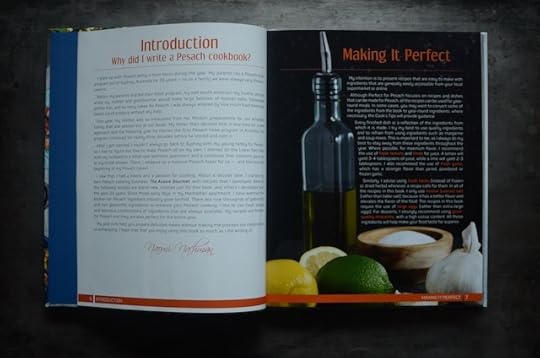
I’ve also hoped that inspiration would strike that would give me a good way to write about it. Because as a book, it brings up some stuff for me (I’ve written about other books with Judaism or kosher cooking at their core without this trouble. I don’t know why this particular volume got me. But it did).
I am Jewish by birth, but was raised in the loose, liberalism of the Unitarian Universalist church. I regret nothing about my upbringing and am deeply grateful for the space I was given to craft and cultivate my own belief system and perspective on the world.
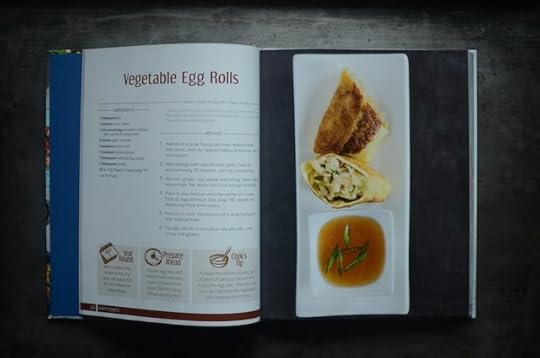
But. Sometimes, I long to fit in. To be connected to that Jewish side of me without uncertainty or fear that I will be denied recognition. And this book triggers that longing. I think it’s happening because this is a book designed to help cooks out during the eight day holiday of Passover/Pesach.
It’s not a book about celebratory meals or festival food (those don’t haven’t caught me off-guard the way this one did). It simply about daily cooking for a time when grains, legumes and anything leavened is forbidden. And that’s not really a space in which I feel like I have easy footing or even feel like I belong.
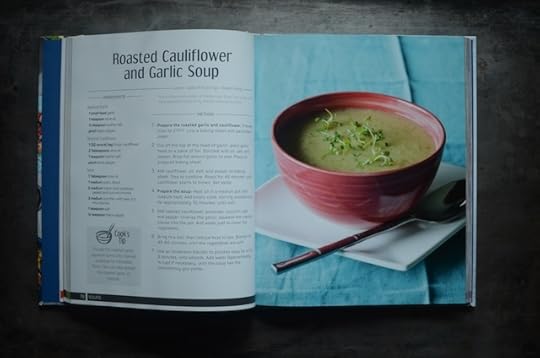
Now, with that angst out of the way, there are things I want to tell you about this book. Like the cover says, these are “Passover recipes you’ll want to make all year.” At its core, this is a book about home cooking and it has a lot to offer in that arena. Because grains are off the table during Passover, many of the recipes are, by default, gluten-free (if that’s your allergen of avoidance, make sure to steer clear of anything including matzo meal).
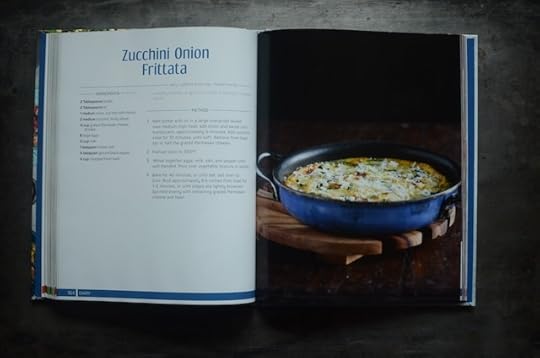
It’s a book that spends a lot of time focusing on vegetables and proteins as well, which makes it relevant also to the paleo and low carb crowd.
I have a long list of things I plan on making, including the Zucchini Mushroom Soup (page 72), Sweet and Salty Pecan Chicken Cutlets (page 112), the Zucchini Onion Frittata pictured above (page 164), and the Crispy Potato Stacks (page 186).
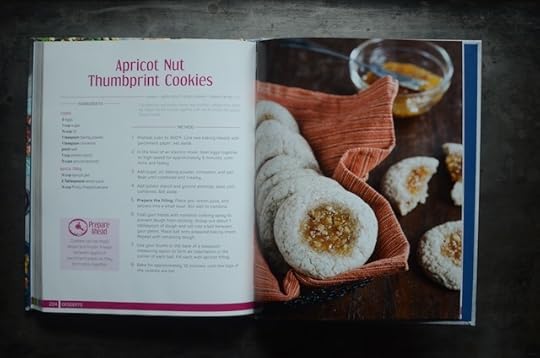
These thumbprint cookies are made using potato starch and ground almonds rather than wheat flour, and the filling is a combination of apricot jam and chopped pecans. Sounds like a good treat no matter what time of year it is!
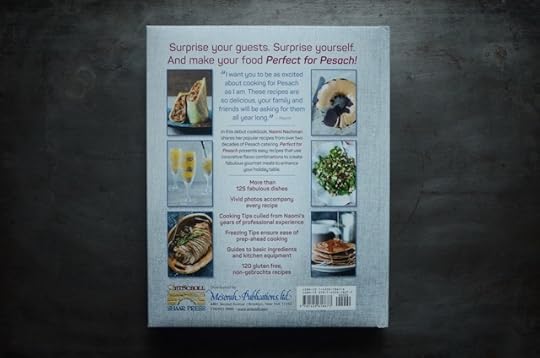
This book is a solid collection of recipes that are terrific whether you keep kosher for Passover, or you’re simply looking for fresh inspiration for your family meals.
Related Posts:
My Imaginary Seder Menu
Cookbooks: Composing the Cheese Plate
Books to Take You Further on the Salt Preserving Path
March 27, 2017
Giveaway: Stainless Steel Storage + Sprouting Lids from Mason Jar Lifestyle

I’ve been a regular mason jar user for nearly two decades now. In addition to canning and fermenting food in them, I fill them with dry goods. I use them to pack lunches. I macerate fruit for jam in the big ones. They are filled with dinner leftovers, sourdough starters, smoothies, brewing kombucha, and more. Somewhere in our apartment, there’s a even a jar filled to the brim with LEGO minifigures.

Though there has been a steady increase in jar accessories and adapters over the last four or five years, to my mind there has always been a void in the marketplace. A one-piece storage lid that didn’t rust, was easy to clean, didn’t leak, and wasn’t prohibitively expensive.

Happily, the folks at Mason Jar Lifestyle have arrived to fill that void. They recently started selling one-piece stainless steel lids that are fitted with silicone seals that are easily removable for cleaning. They are leakproof, non-reactive, dishwasher safe, and so much more affordable than anything else I’ve seen.
They are ideal for salad dressings and vinaigrettes because the lids don’t leak when you give them a good shake. I don’t mind using them on my jars of dry goods because they’re affordable enough that I don’t feel like I need to save them for special things. And they’re easy to put on and off the jars.

The storage lids come in both regular and wide mouth, and are sold in packs of five. And if that’s not enough to meet your needs, Ryan and Maggie at Mason Jar Lifestyle offer discounts on higher volume purchases (buy 100 or more and you’ll get 40% off your order!).
You can also use the code “fij10” now through March 31 to get 10% off any order at Mason Jar Lifestyle. Right now, my favorite thing they sell is the silicone sleeve designed to fit the 24 ounce Pint & Half jars. Paired with a drink lid and a stainless steel straw and I am ready for iced coffee season!
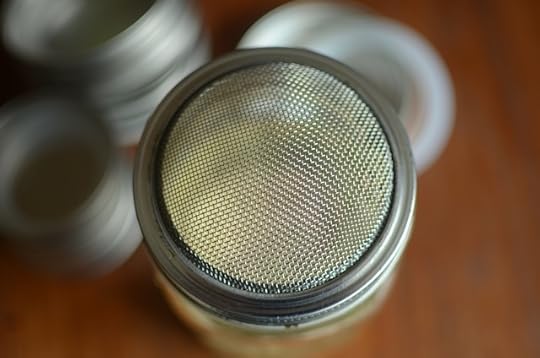
For our giveaway this week, two lucky readers will each receive a five pack of the regular mouth stainless steel storage lids with silicone seals, a five pack of the wide mouth stainless steel storage lids with silicone seals, and one stainless steel sprouting lid and band like you see pictured above (because sprouting is fun! Look for a blog post on the topic in the near future).
Please use the widget below to enter.
Disclosure: Mason Jar Lifestyle is a Food in Jars sponsor. Their ad dollars helps keep this blog running. All opinions expressed are entirely my own.
Related Posts:
Giveaway: Halloween-themed Jar Gear from Mason Jar Lifestyle
Preserve the Harvest Giveaway
Giveaway: Mason Jar Lifestyle Mother’s Day Coffee Gift Set
March 24, 2017
Small Batch Tomato Jalapeño Jam
Prevent food waste with a tiny batch of tomato jalapeño jam. It needs just two clamshell boxes of grape tomatoes and less than an hour of cooking.
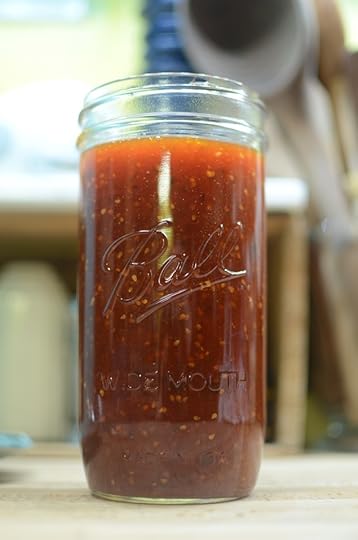
I have half a dozen or so buckets of activity that I’m trying to move forward at the moment and I spend most of my time ricochetting between them. A book proposal. The podcast. My teaching schedule. Taxes. This blog. My email inbox (good lord, that inbox). And around 4:30 this afternoon, I was just done.
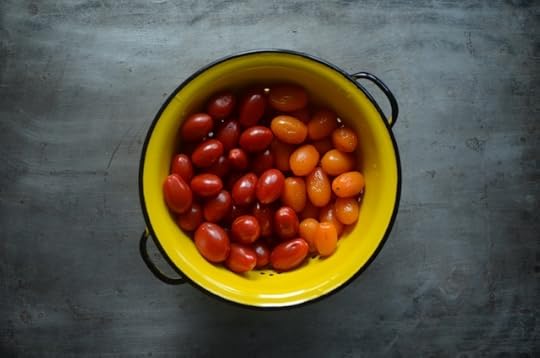
I wandered to the fridge and started looking for things that needed to be used up. Even if I couldn’t move my work world any further at that moment, perhaps I could be productive in other ways.
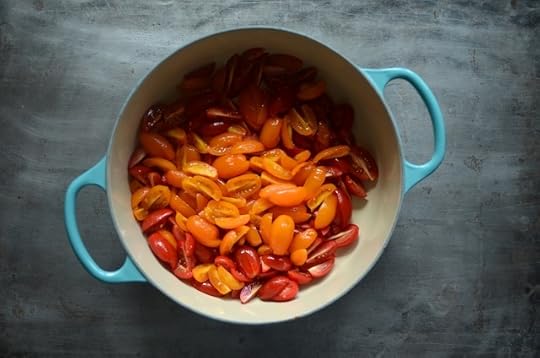
I found two squat containers of grape tomatoes and a tiny jar containing three tablespoons of diced jalapeños (leftover from a recipe testing project that I did for a friend a couple weeks back). Ah yes. Tiny batch tomato jalapeño jam.
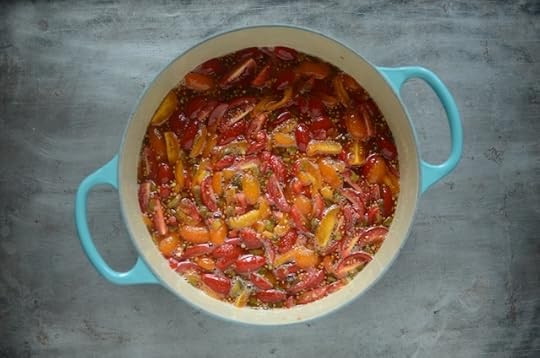
From there, it was a matter of a few minutes of chopping, a quick bit of measuring, and 45 minutes of low simmer. I could have cooked it down more quickly over higher heat, but wanted to be able to do a sink full of dishes and some other prep, and so opted for a lazy bubble rather than a frenzied one.
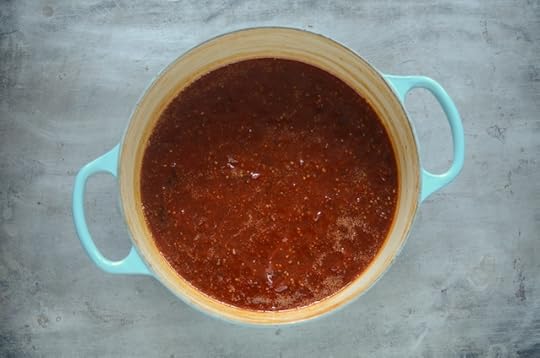
And then, it was done. Tomatoes and jalapeños repurposed rather than wasted and a sense of purpose regained. Now, I’ll confess that finished batch doesn’t forge any particularly new territory in the world of tomato jams. But the heat and brightness of flavor made it delicious enough to merit a quick blog post. And so here we are.
Now, tell me. How do you handle it when you hit a work wall?
PrintSmall Batch Tomato Jalapeño Jam
Yield: makes 3 half pints
Ingredients
2 pounds small tomatoes, halved or quartered2 cups granulated sugar
3/4 cup apple cider vinegar
3 tablespoons diced jalapeños
1 teaspoon salt
1 lemon, zested and juiced
Instructions
Prepare a boiling water bath canner and three half pint jars.Combine the tomatoes, sugar, vinegar, jalapeños, salt, and lemon zest and juice in a low, wide, non-reactive pan.
Bring to a boil over high heat and then reduce the heat to medium. Simmer until thick (30-45 minutes, depending on the height of the heat and the width of your pan).
Use an immersion blender to puree the jam a bit, if you want a smoother texture (this also helps integrate the jalapeños, making for a more uniformly spicy preserve).
Funnel into the prepared jars. Wipe the rims, apply the lids and rings, and process in a boiling water bath canner for 15 minutes.
When the time is up, remove the jars and set them on a folded kitchen towel to cool. When the jars have cooled enough that you can comfortably handle them, check the seals. Sealed jars can be stored at room temperature for up to a year. Any unsealed jars should be refrigerated and used promptly. 3.1http://foodinjars.com/2017/03/tomato-jalapeno-jam/
Related Posts:
Tiny Batch Gooseberry Jam
Maple Bourbon Apple Butter + OXO On Illuminating Digital Immersion Blender
CSA Cooking: Smoky, Spicy, Skillet Tomato Jam
March 23, 2017
Raspberry Meyer Lemon Shrub
This raspberry meyer lemon shrub is the perfect take for anyone who’s a little bit skeptical about the idea of using syrup-y, vinegar infused concoctions in their own kitchens. The lemon tempers the vinegar and makes for a bright, flavorful concentrate.
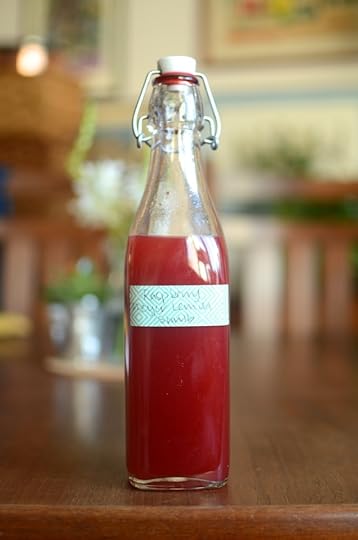
This month’s Food in Jars Mastery Challenge has been all about jellies and shrubs. We’ve been doing a lot of talking about jellies here on the blog, but nearly as much about shrubs. Today, that changes.
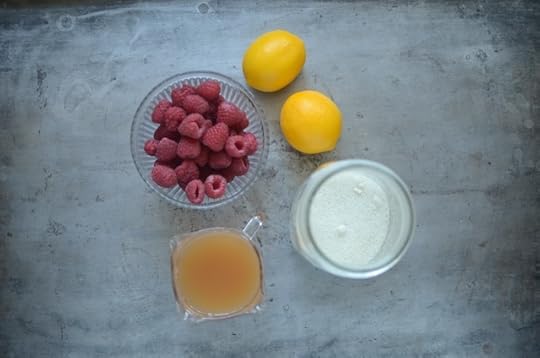
This raspberry meyer lemon shrub is one of my favorites because the berries bring vivid color and flavor, and the lemons help moderate the sharpness of the vinegar.
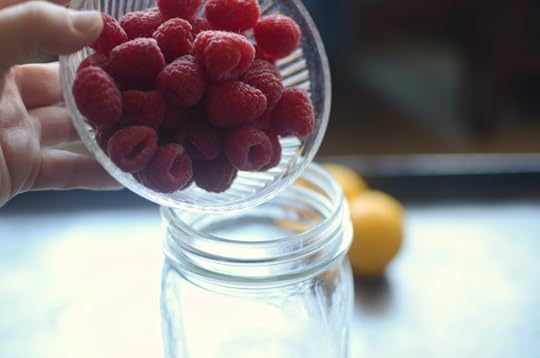
This is an uncooked shrub and you start simply by muddling 6 ounces of raspberries and 8 ounces of granulated sugar together (I love my Masontops Pickle Packer for this task).
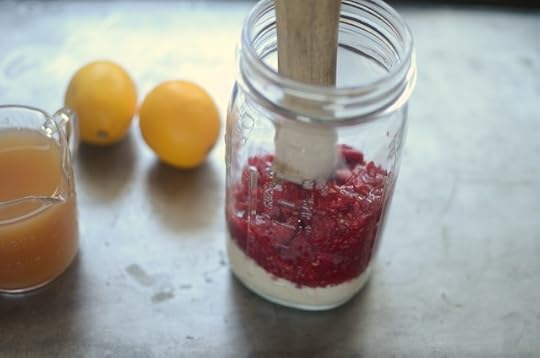
Once the berries are well smashed into the sugar, you zest 2 meyer lemons into the jar.
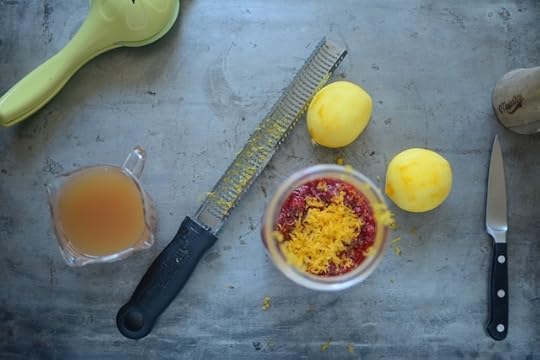
Cut open those lemons and squeeze the juice into the jar.
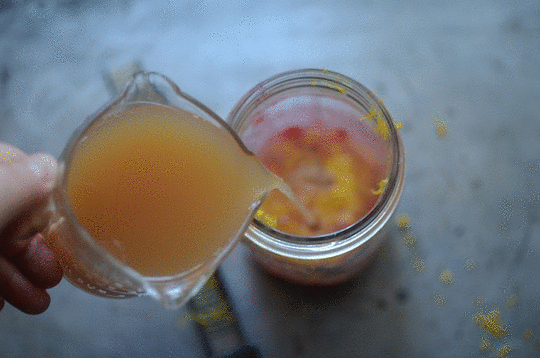
Then, in goes 1 cup of apple cider vinegar.
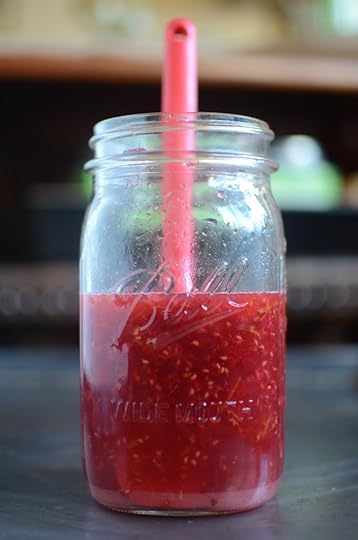
Stir it together and let it rest overnight in the refrigerator.
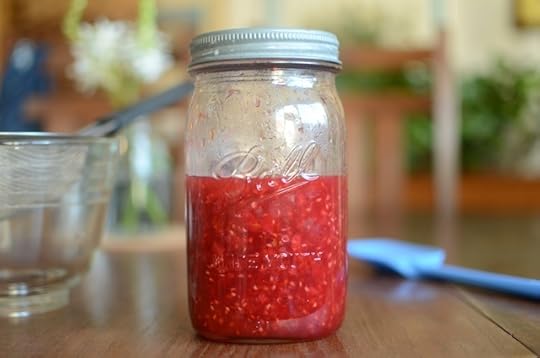
The next day, pull the jar out of the fridge. Give it a good stir to make sure that all the sugar has dissolved into the fruit juice.
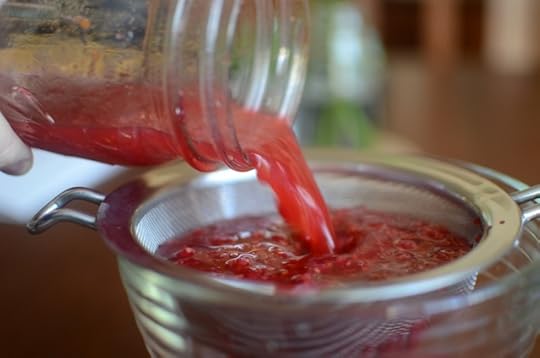
Set a fine mesh sieve over a bowl and pour the macerating fruit and syrup through.
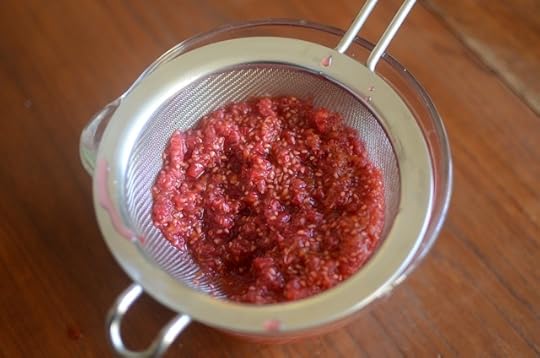
Use a silicone spatula and really work the seeds around in the sieve so that you get all the liquid into the bowl.
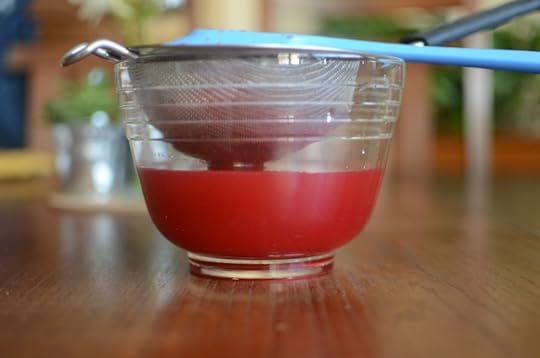
Such a great color!
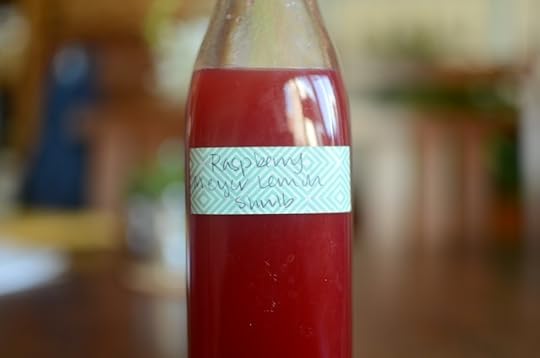
Once the shrub is finished, it will keep in the fridge for 3-4 weeks. Pour it into sparkling water, drizzle it on fruit, use it to top ice cream, or make a vinaigrette out of it.
Related Posts:
Jellies and Shrubs for the March Mastery Challenge
Facebook Live Shrub Demo This Thursday
Mango Habañero Mint Shrub
March 22, 2017
Facebook Live Shrub Demo This Thursday
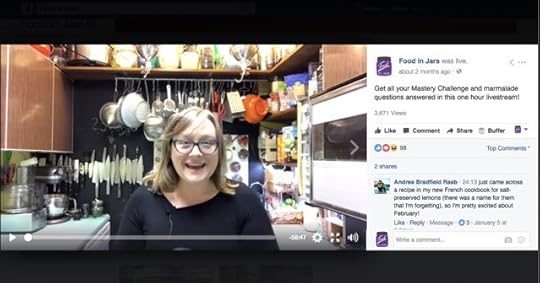
Hello canners! Join me on Thursday, March 23 at 9 pm eastern/ 6 pm pacific for an hour-long Facebook livestream over on the Food in Jars Facebook page.
This time, I’m going to show you how to make a small batch of Raspberry Meyer Lemon shrub and will show you at least three different ways to use it. I’ll also be available to answer all your questions about this month’s Mastery Challenge and will talk a little bit about what’s coming for next month, as well.
Look for the recipe for the shrub recipe here tomorrow, so that you can make it along with me, if you so desire.
Related Posts:
Mango Habañero Mint Shrub
Submit your March Mastery Challenge Projects Here!
Facebook Live Jelly Demo this Thursday
Mango Habañero Mint Shrub
Today’s guest post comes to us from Erin Urquhart. She’s stopped by to share her recipe for Mango Habañero Mint Shrub. Welcome to Food in Jars, Erin!
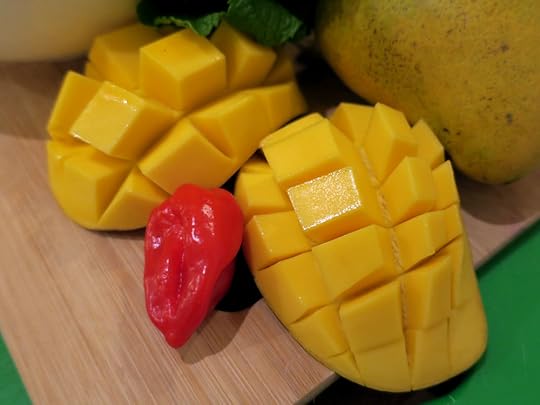
Over the past couple of years I have began to notice that unintentionally many of my preserved goods either include alcohol or pair perfectly with alcohol- a strange coincidence, indeed. I’m beginning to think that I “subconsciously” come up with pickle ingredients with martinis on the mind. By no surprise, I admit that I am a sucker for any type of brined, vinegar-based, or bitter cocktail.
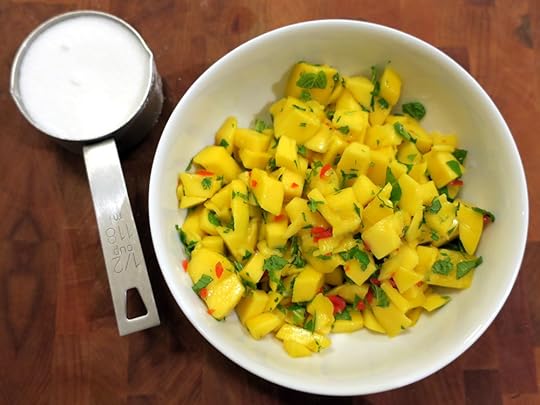
Having only ever read about shrubs on ingredient lists, I was surprised to learn the very intentional alcohol related origin of liquid shrubs. As story goes, shrubs originally gained popularity in the 1680s among English smugglers who were trying to avoid paying import taxes on booze being shipped from Europe. To avoid detection and thus taxation, smugglers would sink barrels full of alcohol off the Atlantic coast to be retrieved at a later time. Upon retrieval, the addition of the shrub fruit flavors were used to mask the taste of alcohol fouled by sea water. Who knew!?
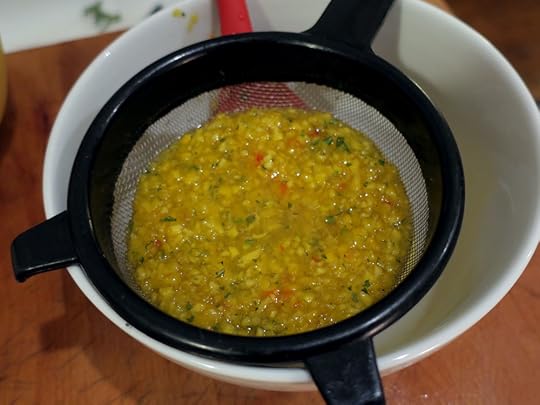
Unless your pirate heritage runs deep, nowadays, shrubs, aka “drinking vinegars” are making a come back in the international cocktail scene. Due to their high concentration of vinegar and sugar, shrubs can be prepared in advance made as a pre-made drink mixture. When Marisa announced the 2017 Food in Jars Mastery Challenge late last year, I found myself beyond excited with anticipation for all the creative and weird cocktail shrubs I planned to make.
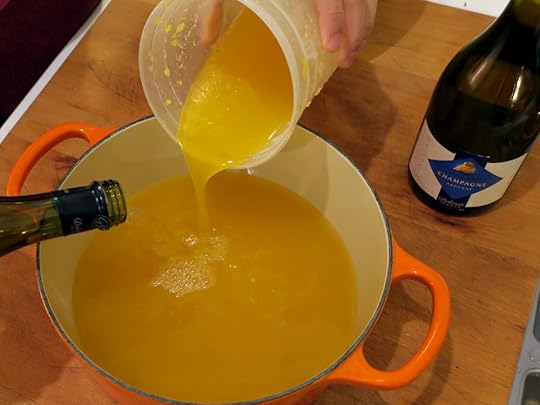
Apparently, because my craft shrub confidence isn’t quite up to par to make more wild types of shrubs like a fennel fruit shrub, or a sweet tomato shrub, I decide to play it safe for this month’s challenge. This recipe presents a refreshing yet spicy shrub combination, a Mango Habañero Mint Shrub. To keep the flavors strong and fresh, I opted for the cold-pressed shrub method. Additionally, because I didn’t want to mask any pepper or mint, I chose the more delicate color and flavor profiles of champagne vinegar.
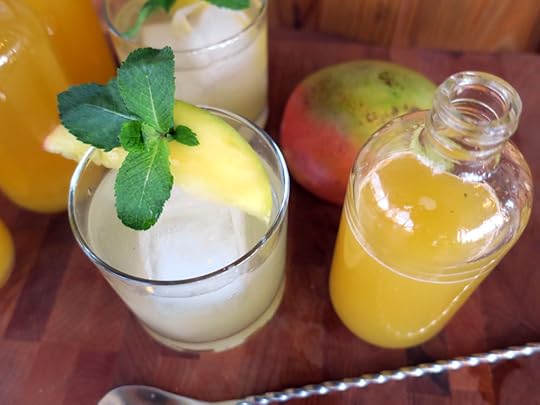
The resulting sweet heat of this mango shrub is pretty phenomenal. I admittedly coughed following first gulp (oops), “wow that’s really strong!!”. Alas, after bottling and letting it settle in the fridge for a couple days the taste is now just right, and it’ll only get better. For a stronger mint flavor, I recommend upping your fresh mint amount.
For a refreshing drink serve this Mango Habañero Mint Shrub with ice cold water/seltzer, or get spicy and serve it with the Tequila Shrub Cocktail listed below. Also, make sure you reserve that mango fruit pulp for an awesome topping for your Saturday morning french toast, or perhaps use it in a homemade spicy mango cornbread. Yum!
Scientist by day, pickler by night, Erin Urquhart (from Putting Up with Erin) has always had a deep affinity for pickles. She’s the type of person who is super disappointed if pickles aren’t included in every holiday spread. A regular contributor of pickle reviews to her local Durham, NC newspaper, she even drives a car with “Pickle” vanity license plates.
PrintMango Habañero Mint Shrub
Yield: 6 cups
Ingredients
4 1/2 cups chopped mango3 habanero peppers (de-seeded and finely diced)
4-6 tablespoons minced mint leave
4 1/2 cups granulated sugar
4 1/2 cups champagne vinegar
Instructions
In a medium size bowl combine prepared mango, habanero peppers, and fresh mint.Stir in sugar. Cover bowl with plastic wrap and place in fridge for 2-4 days stirring every 12 hours. Optionally use can quickly chop up solids with an immersion blender.
When the juice exudes from fruit and starts to combine with sugar to form a syrup remove from fridge.
Strain syrup from fruit, then combine syrup with champagne vinegar.
Serve shrub immediately, or store in fridge for a week or longer to meld and mellow flavors.
Notes
To make the Tequila Shrub Cocktail
1 1/2 ounces blanco tequila
1 1/2 ounce Mango Habañero Mint Shrub
1/2 ounce St. Germain
1 ounce club soda
Add tequila, shrub, and St. Germain to cocktail shaker.
Fill shaker 2/3 full with ice and shake vigorously until the outside of the shaker begins to frost.
Strain into a cocktail glass with ice, top with club soda, garnish with fresh mango and fresh mint sprig.
Related Posts:
Facebook Live Shrub Demo This Thursday
Submit your March Mastery Challenge Projects Here!
Jellies and Shrubs for the March Mastery Challenge

